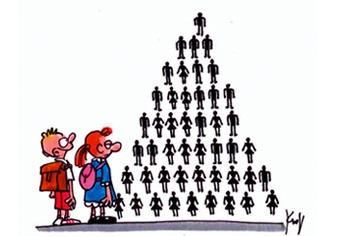New Report: Occupation Matters for Gender Segregation
Published:
The Report of the European Commission, a new method to understand Occupational Gender Segregation in European Labour Markets, highlights the influence of the occupational character on gender segregation. Not only the number of women or men working in an occupation, but also whether it is a blue-collar or white-collar occupation, decides about "working conditions, the hours of work, the risks and hazards and the pay". These indicators influence "at least in part, [...] the occupations itself."
Gender segregation is defined in absolute terms, which means to count the actual number of men and women in an occupation or workplace. Today's "nature of an occupation" has to be seen as a result of negotiations between social partners and of the economic and social development. The outcome shows no significant developments in the last 20 years, gender segregation in most occupations remains, although there is clear disparity between the member states. Particularly the pay gap between female- and male-dominated occupations, is different in the member countries.
Taking into account that measures and tools for work-related risk assessment are still focused on male-dominated occupations, it is simplistic to state that that men are more in danger of work-related accidents than women. The main work-related hazards for women remain the same. They struggle with career-disadvantages for having a family, problems in reaching decision making positions and the gender-pay-gap.
What can member states do, to tackle gender segregation? Especially in the "public sector working conditions, pay and career opportunities are important if women are to have good prospects at the middle to top end of the labour market." Furthermore, national labour market laws, such as minimum wage, are crucial for gender equality at the workplace.
To read the report click here.